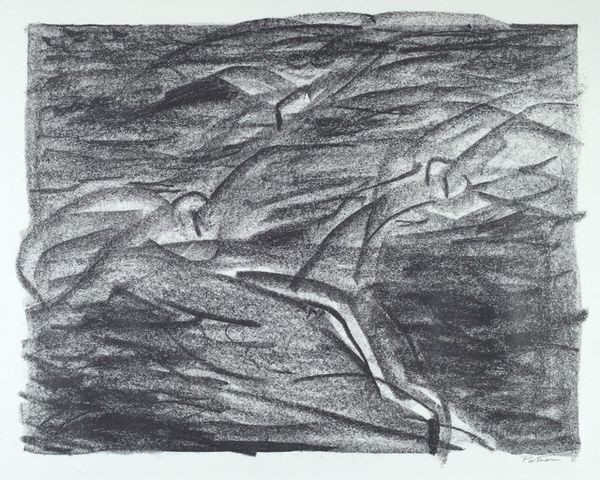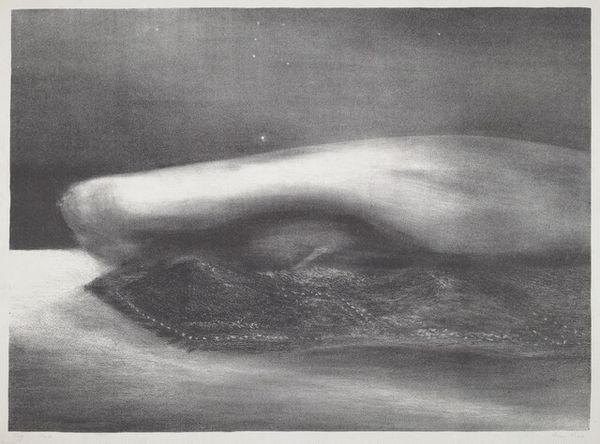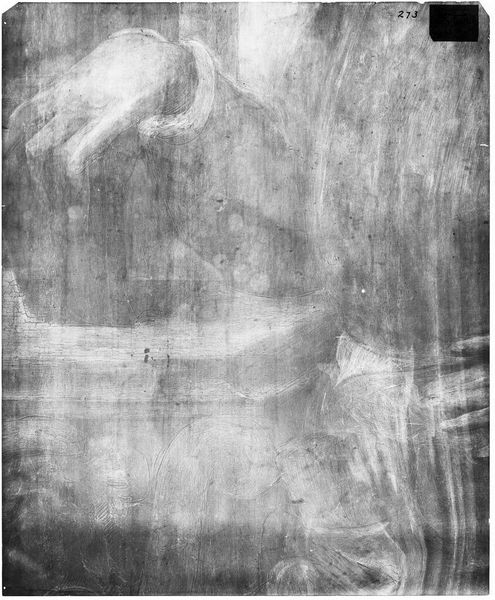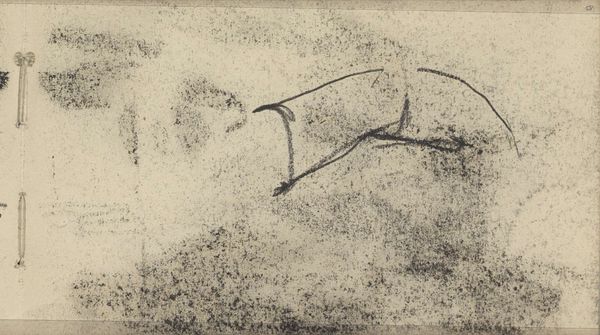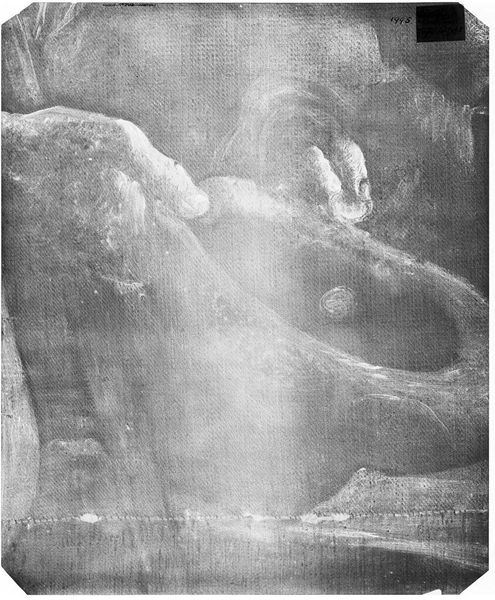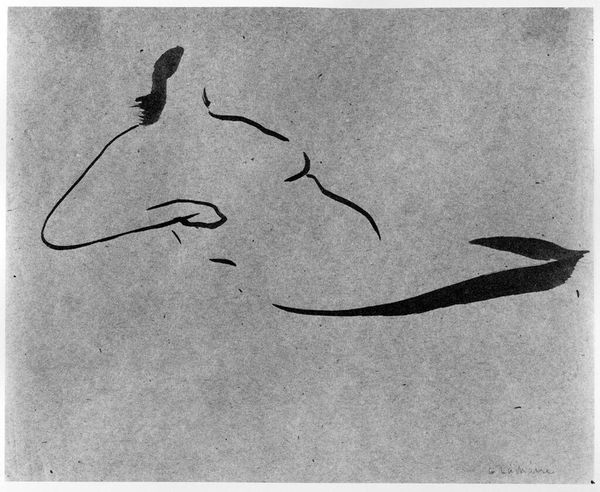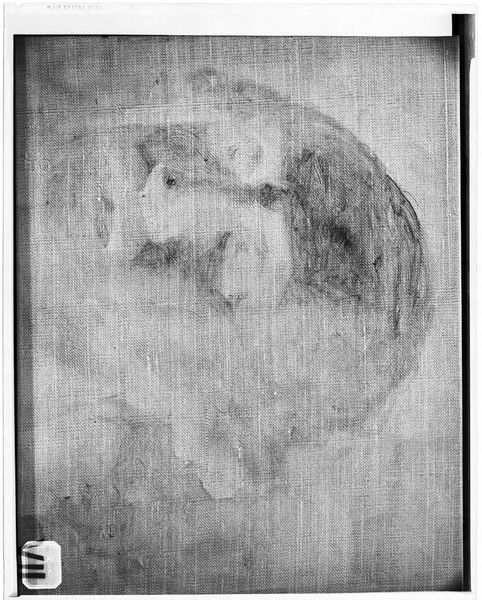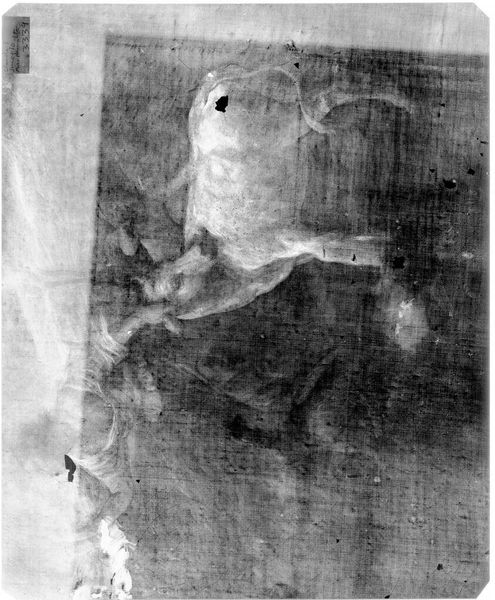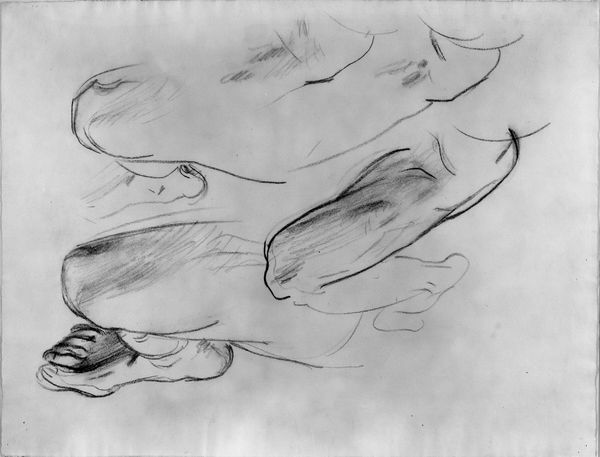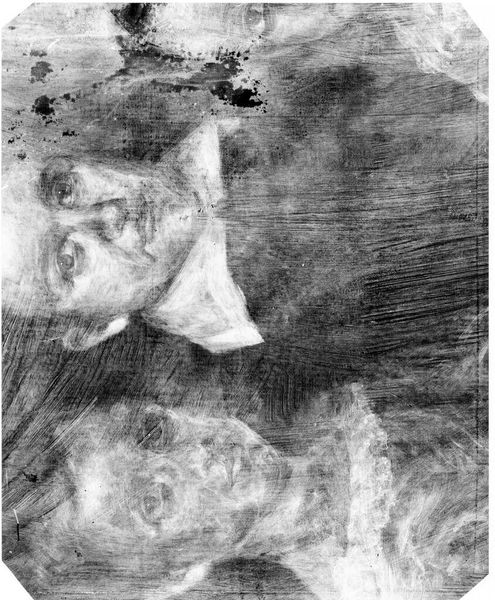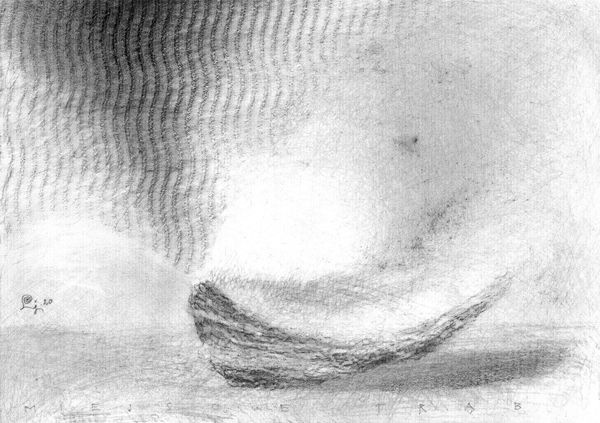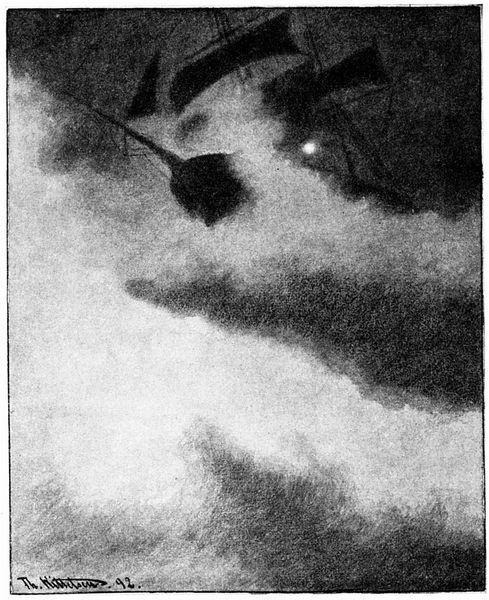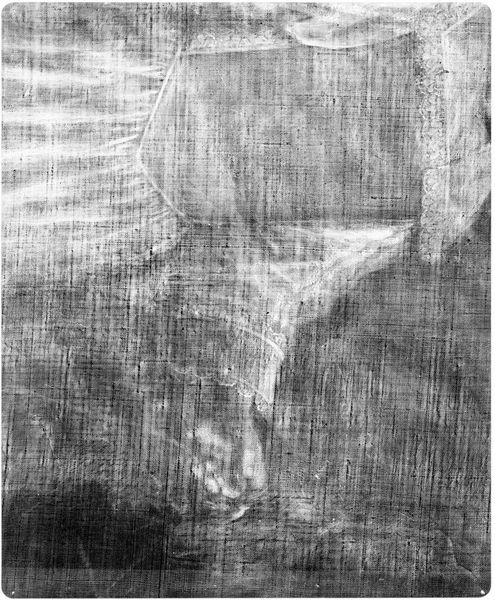
drawing, dry-media, charcoal
#
drawing
#
landscape
#
charcoal drawing
#
dry-media
#
symbolism
#
charcoal
Copyright: Public domain
Editor: This charcoal drawing is called "Haa Var Detta For Nokko," created by Theodor Severin Kittelsen. It looks like a snowy landscape, but something about the starkness of the black and white, the soft focus, makes it feel unsettling, almost like a dream. What do you see in this piece? Curator: Structurally, the artist uses a high horizon line, compressing the landscape and emphasizing the negative space of the sky. The varied texture achieved through charcoal – smudging and layering – gives a sense of depth despite the limited tonal range. Notice how the artist juxtaposes sharp details with soft gradients, drawing our eye towards a specific focal point while maintaining an overall atmospheric quality. The recurring forms create interesting relationships of depth, and I invite viewers to find an underlying architecture, if there is one, connecting each of these forms together to create something cohesive. What is the affect of the varied shapes and scales in relation to one another? Editor: I see what you mean about the depth. At first glance, the composition seemed flat, but the varying textures make it less so. It is odd, however, that the details lack significant, hard contours; almost as though one were trying to remember a distant memory. I hadn't considered the compressed space created by the horizon line, I appreciate that you pointed that out. How do you read the dark shape within this snowy expanse? Curator: It disrupts the balance. Consider it a counterpoint to the predominantly soft lines, inviting speculation. Formally, it functions as an anchor, grounding the composition but simultaneously creating tension, drawing the eye from the gradients of shading above the subject toward the contrasting color around it. Do you think that that the darkness invites symbolic readings or contributes primarily to the formal, visual interplay within the drawing? Editor: It is difficult to separate them because everything exists as a symbol and vice versa. So, a symbol always works on a formal, aesthetic register. But the reverse is true: how a shape interacts with its surroundings makes one more aware of symbolic valences that are inherent in the object. Thank you, I'll consider those relationships more closely. Curator: Indeed. Engaging with these relationships unveils layers of interpretation and elevates our appreciation for the artist’s intention and our experience of art itself.
Comments
No comments
Be the first to comment and join the conversation on the ultimate creative platform.
